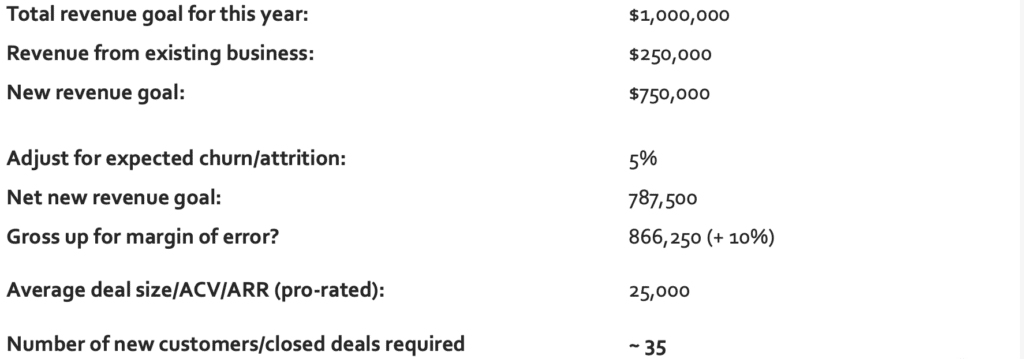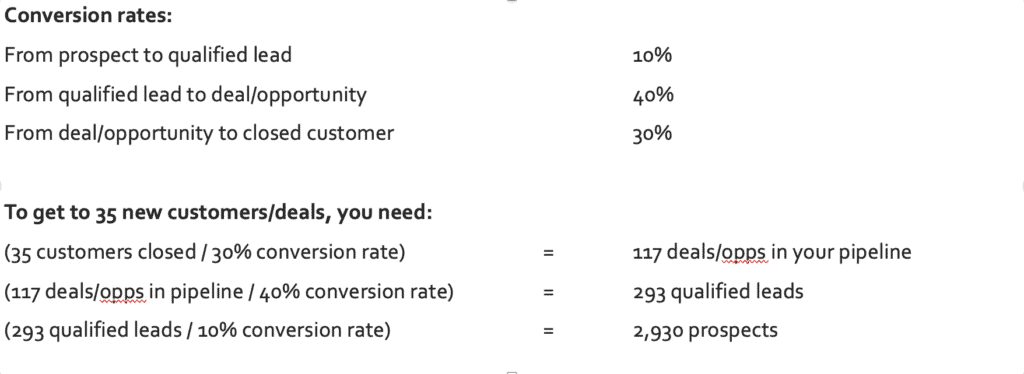At our most recent Growth Snacks, leads were a hot topic. We pointed out that at 321, we often see entrepreneurs putting lots of emphasis on driving leads into the top of the funnel (which is good), but without the clarity that comes from knowing how many qualified leads are actually required to hit their revenue targets (which is bad).
Luckily, that’s why our Growth Snacks series exist—to clear up important points about how to grow your business sustainably and successfully. Read on as we show you how to figure out precisely how many leads you need to hit your revenue targets.
Different types of leads explained
Not every lead is equal, so understanding how to categorize your leads is key to knowing how to manage them.
When a lead is “qualified”, it means you’ve determined they are a good fit with your ideal customer profile (ICP) and thus likely have the problem your product or service solves and might be interested in what you’re selling.
But there are different levels of qualification. Let’s take a look at the differences using some common acronyms:
MQL: Marketing Qualified Leads are those that have been generated through marketing campaigns and have likely interacted with your brand and shared enough info (such as by filling out a form) that marketing deems them a reasonable “fit” and ready for sales attention.
SAL: Sales Accepted Leads are those that have been handed off to the sales team for follow up.
SQL: Sales Qualified Leads are those where Sales has done some additional qualification and they are confident that they are a good “fit”, and Sales is “working” the lead.
How many leads do you need? It depends…
The number of leads your organization needs depends largely on your customer acquisition model—i.e., The number of leads your organization needs depends on your customer acquisition model. Do you take a marketing-intensive approach or are you more focused on direct sales?
Marketing
Marketing-intensive customer acquisition models tend to be a great fit for B2C and B2SMB companies, where the product has a lower price point, it’s a transactional sale, the product is simple with little to no customization – and thus your unit economics (i.e. skinny margins) means you can’t afford direct sales. Marketing-led acquisition likely means you need more leads at the top of your funnel, as they can have lower conversion rates.
Sales
Sales-intensive customer acquisition strategies tend to be more a focus for B2B companies, for selling pricier, more complex or customized products, where the customer might want more of a relationship-sell. Sales-led acquisition likely requires fewer top of funnel leads, they typically convert at higher rates but take more effort and investment to convert.
Image credit @ Leslie’s Compass: A Framework For Go-To-Market Strategy
It also depends on a number of other factors, like how well they know you how well you understand how they buy, the competitive landscape and so on.
So, how do you calculate the leads you’ll really need?
Of course, you’ll want to use a combination of sales and marketing leads to acquire customers. Here are a few examples.
A simple example: how many customers/deals?

Here’s a simple example: Conversion rates? How many leads?

Divide & conquer
Once you know how many leads you’ll need in total, it’s time to figure out how many need to come from marketing campaigns and how many need to come from sales prospecting. Assuming a 60/40 split for the example above, that means:
- Marketing would be responsible for 1550 leads
- Sales would be responsible for 1030 leads
Now you’ve got to figure out the conversion rates for each of those departments to turn someone into a prospect. For example, if your landing page has a 5% conversion rate, marketing will have to drive 31,000 visits—and if your sales team has a 40% call conversion rate, they’ll need to make 2575 outbound calls.
As you can see, figuring out the number of leads you’ll need is different for every business—but there is a formula you can rely on to arrive at useful, concrete numbers.
Tracking leads (because things change!)
Of course, the example above isn’t perfect—a formula can help you arrive at an approximation of what to expect, but the real world is much less predictable. Differences across products, regions, segments, and customers can all impact conversion rates—along with the performance of your sales team, and the unpredictable journeys of each individual buyer. That’s why tracking your leads over time is vital; it helps you refine your numbers and create more predictable campaigns over time.
Start looking at your conversion rates early, and make notes of what influences them. It’s also a good idea to keep your focus narrow (at first, anyway) so you can concentrate on fewer numbers and make sure you get them right.
For best results, give someone on the team the job to collect and analyze this data. And make sure they’re measuring outcomes at every step of the buyer’s journey—not just views, clicks, likes, and shares, but measuring all the way to revenue. You want to know exactly what it takes to turn a prospect who’s never heard of you into a happy paying customer.



